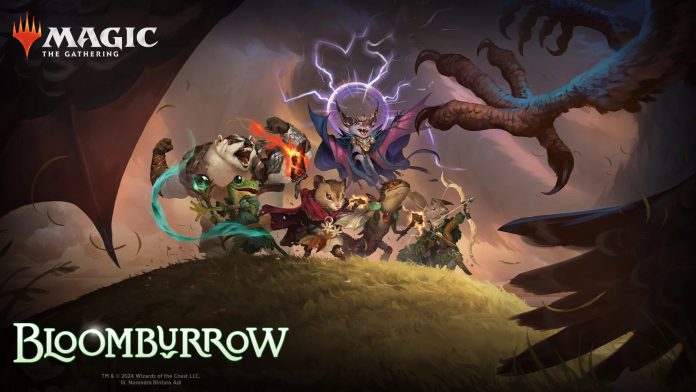Magic’s newest expansion takes us to the newly introduced plane of Bloomburrow, a land without humans populated instead by anthropomorphic animals. A new set means new mechanics, and we’ve got some good ones. In this article we’ll talk about the mechanics and offer some thoughts on what they mean for Commander and other formats and how they’ll play.
Offspring
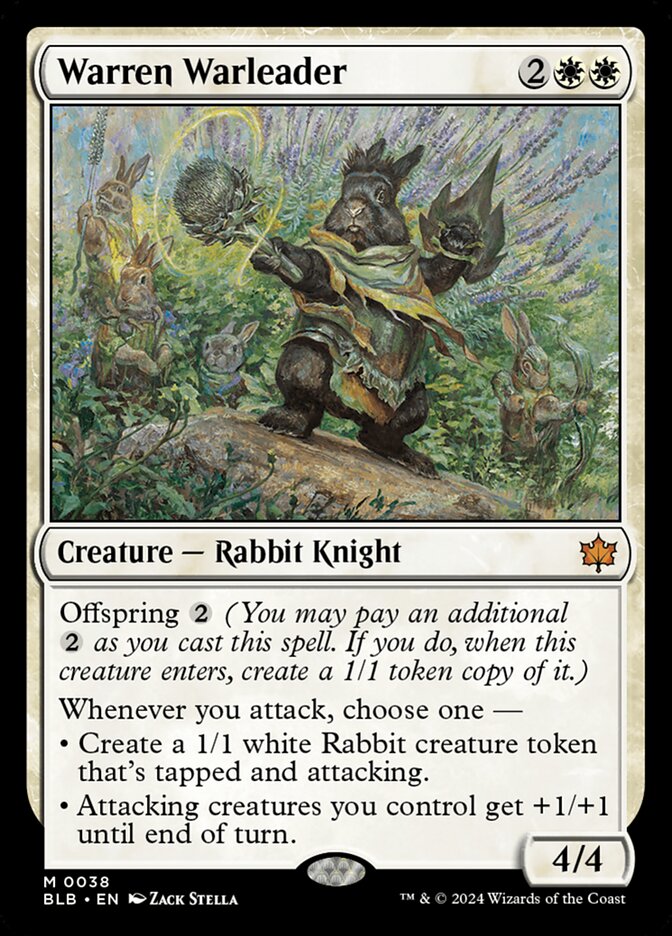
Offspring will feel very familiar for fans of kicker and other similar mechanics. When you cast the spell you may elect to pay its offspring cost in addition, and if you do it creates a 1/1 token copy of itself when it enters. This is also a good time to point out that they have made a slight change to their wording template and “enters the battlefield” has now been shortened to “enters”, likely because how much text is winding up on modern cards. Like maybe directly for Beza, the Bounding Spring for instance.
FromTheShire: I’ve always loved kicker and how it scales up a little as the game goes longer. Being able to get a second copy of a utility creature is great; most of the time you are here for the effect not the stats, so the copy being a 1/1 is minor drawback. This is even more the case in a deck that can double the number of tokens it creates or populate them or both.
BPhillipYork: There’s a theory that Magic only really has a couple of mechanics, and “pay additional cost with spell to do something” is one of the most common. This is potentially really powerful for creatures with triggered abilities since frequently you’re paying for a stat block you don’t really care about and effectively paying 2 to get another copy of the trigger. However, these tend to be priced so you’re not seeing a useful 1 drop with a trigger with offspring. Overall very much balanced for 4-of play but I think there will end up being several playable offspring cards, particularly if there is a way to give offspring to other creatures.
TheChirurgeon: I liked Eternalize back in Hour of Devastation as a way to create token copies of creatures with specific abilities but I think 1/1 copies are a better mechanic than 4/4 copies. You can just do much more with them and make them much more reasonably costed to work with. This is great and Warren Warleader is going to get out of hand very fast if you don’t handle it. Great card.
Gift
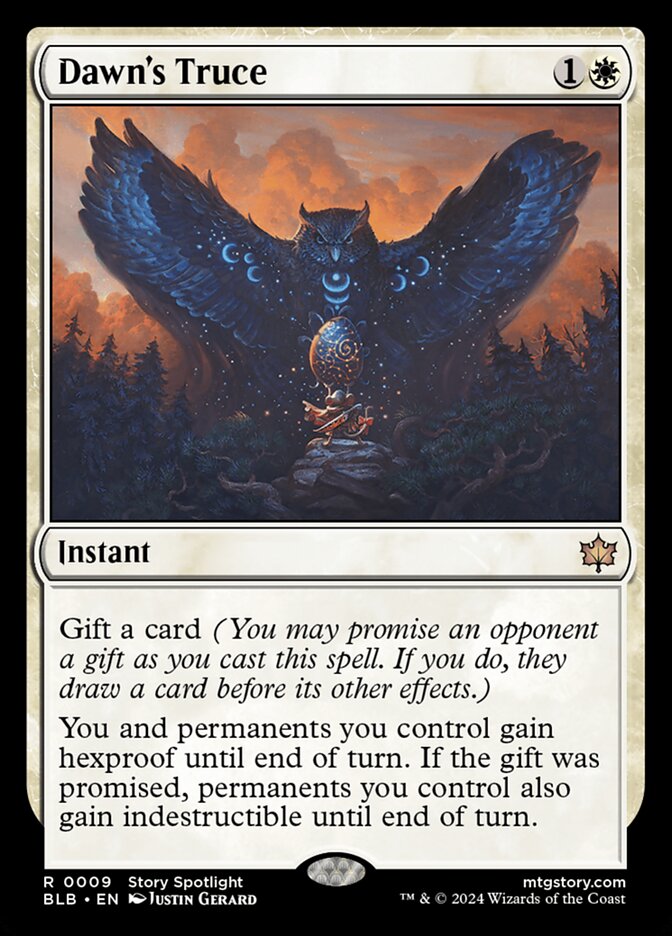
Continuing in the same vein, Gift is also an additional cost you may choose to pay when you cast a spell, but in this case what exactly you’re paying varies from card to card. You may be having them draw cards, create creature tokens, create treasures, or whatever else is indicated.
FromTheShire: Long time readers know I’m always loath to give my opponents anything at all if I can help it, but there are for sure some cards in this set where the gift is completely worth one other player benefitting. Take Dawn’s Truth here, letting one person draw a card so I can save my entire board? Super worth it. It’s also nice that these cards are frequently playable even on their base rate, with the upside of being able to get political if you so choose.
BPhillipYork: I think this mechanic is really good for multiplayer and kind of meh for 1-on-1 games. For Commander there is a degree of politicking, but there’s also the opportunity to turn a downside into an upside; sometimes forcing people to draw can be very useful. For instance this is a really decent protection for your creatures, and I like the potential tradeoff where you get someone to wrath while you protect your stuff and replace their card in exchange.
TheChirurgeon: Yeah, it’s fine in one-on-one games where you’ll just only pick cards which gift things you’re readily able to give up, but really shines in Commander. But this mechanic has been around a long time in white, just not by this name – Swords to Plowshares and Path to Exile both effectively do this, and we established pretty much immediately that those effects were good enough to be competitively busted. So I have high hopes for this one.
Forage
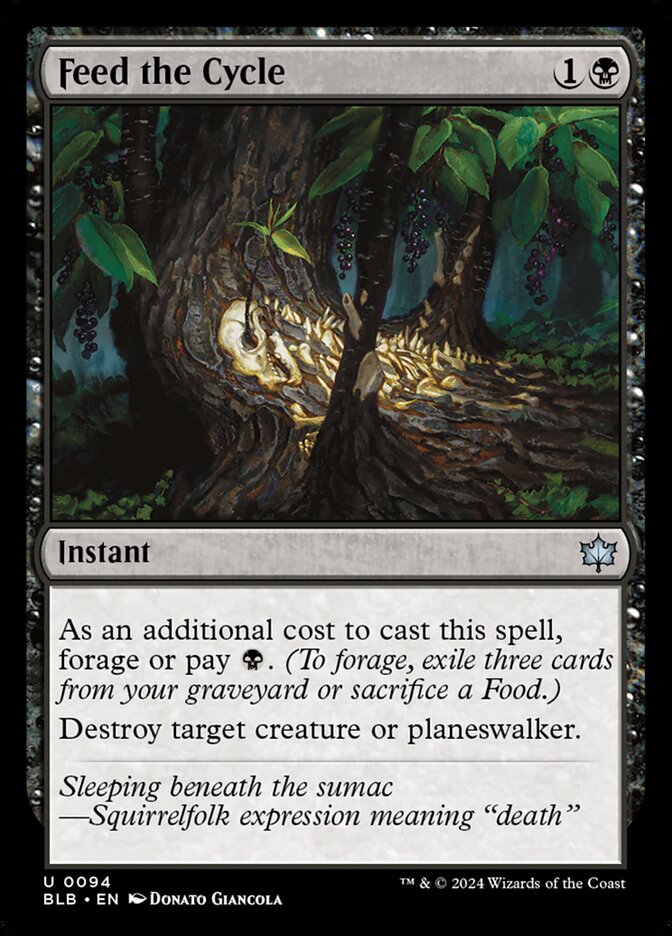
Foraging is an additional cost for certain spells or abilities that asks you to either exile three cards from your graveyard or sacrifice a Food token.
FromTheShire: This seems fine, multiple ways to pay the forage cost mean the decks that want to do it should be able to do so consistently.
BPhillipYork: This is like escape or discovery but the graveyard version. It requires milling or creating Food, though in this case you can just pay 1 more instead. I generally am in favor of ways to turn your yard into a resource also. The sacrifice a Food thing is pretty neat in my opinion as Food is sometimes an underpowered mechanic, so having a real payoff for having Food around is pretty useful.
TheChirurgeon: There are a ton of ways to create Food now we’ve seen it in multiple sets and yeah I agree that it’s a bit undervalued and underpowered. Glad to see a new mechanic use it to better effect and I like the direction they’ve taken using Magic’s staple token types. And if you don’t have a food token well, using your graveyard to get cheap effects has always been very good in Magic, though usually those effects show up in sets which focus more heavily on the graveyard. Not a problem if you aren’t playing Standard, though.
Valiant
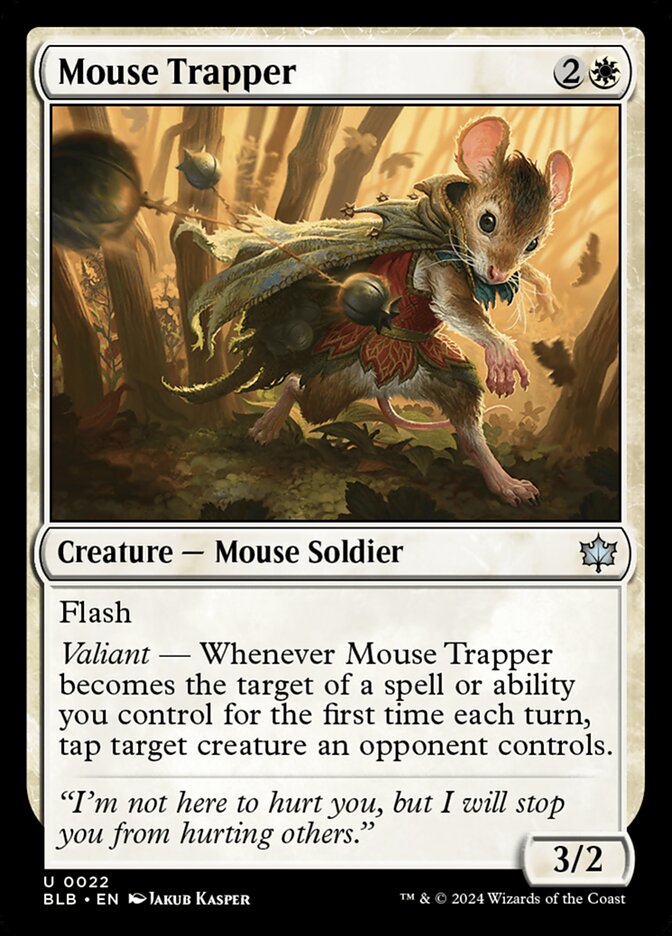
Valiant is similar to Heroic, triggering on spells or abilities you control targeting your creatures, but only once per turn.
FromTheShire: I’m high on valiant in Standard, Mouse aggro in particular. Curving Heartfire Hero or Flowerfoot Swordmaster into Manifold Mouse into Mabel, Heir to Cragflame is really going to make your opponent have to have answers quickly. My inner Redwall is pleased.
BPhillipYork: This is kind of heroic, but not really. Really powerful for aggro in general, but pretty lackluster in Commander.
Expend
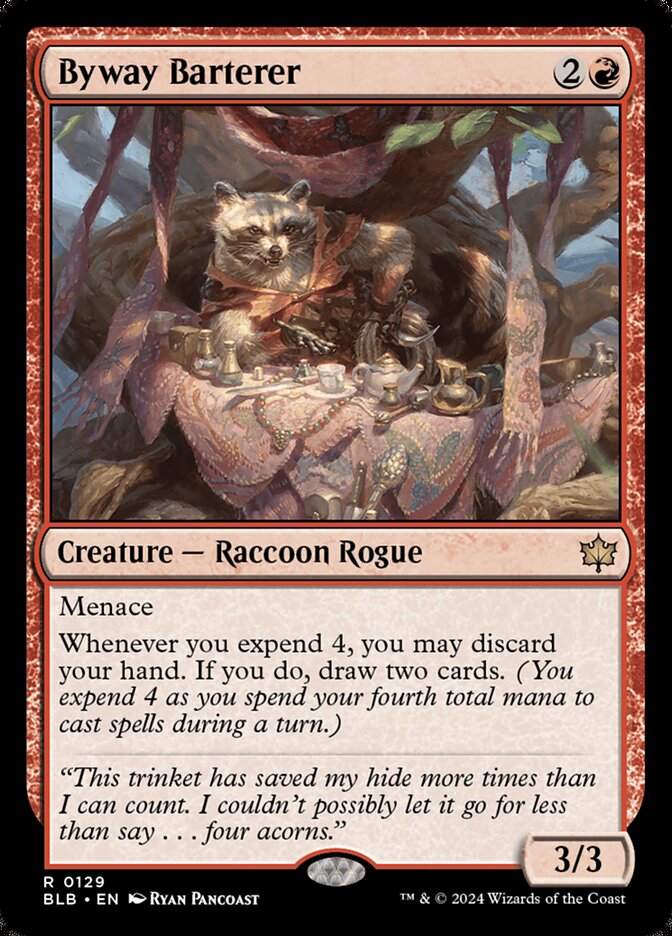
Expend is a new mechanic that tracks the total amount of mana you have spent during your turn, and triggers when the appropriate number has been hit. This means it ONLY happens if the permanent is on the battlefield when the mana is spent, and you can only hit it once per turn. For example, Byway Barterer here only triggers on your 4th mana spent, not 4th, 8th, and so on.
FromTheShire: This feels like it may have some dies to removal issues where if you’re playing everything on curve it has to sit out for a turn in order to get the effect. That being said, if anything sticks this seems like it can snowball quickly in 60 card. Unlikely to have much of a Commander impact outside of a few individual cards.
BPhillipYork: There’s nothing wrong with this mechanic per se and I really like idea of it, it’s good to be spending mana and doing things, but to really leverage it you have to actually interact or do things on your opponent’s turn. However, almost all the cards they printed with it so far don’t really give you an effect that’s as useful on some else’s turn (basically gain +1/+X either as a counter or temporarily). This one is probably the most powerful example of the mechanic, and it’s definitely worth harnessing and is a neat payoff to just blam through a low mana cost deck. There’s sufficient support in red now to have a plan to just cast your hand out every turn, or maybe more than once per turn.
TheChirurgeon: This is a mechanic that makes perfect sense as something they’d do, but just feels really clunky. I like that an opponent can’t prevent you from expending – they can counter the spells, but won’t stop the counter from going up – but something about the mechanic just feels clunky. Expend doesn’t feel like a new mechanic so much as a new rules concept they’re trying out and I’m not sure if this was the right set for it? Otherwise it’s fine. I like the Barterer here quite a bit as an individual card in aggressive monored decks where you can curve out on turn 4 and then still get two new cards in your hand.
Pawprints
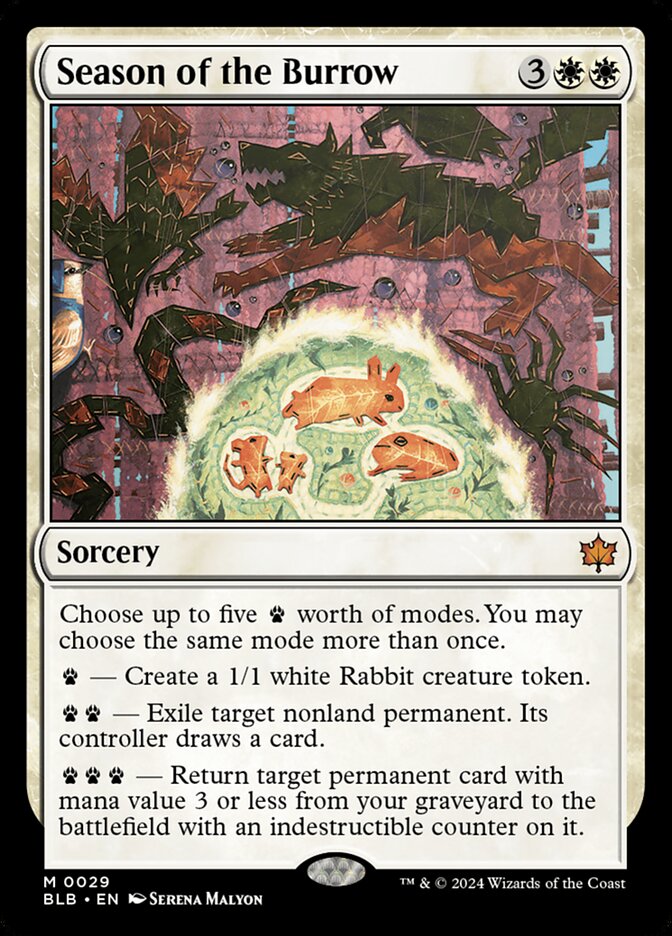
Pawprints are used on a new cycle of mythic Season spells. Each is a modal sorcery that temporarily gives you 5 pawprints to spend in whatever combination of modes you would like that add up to 5. Note that these are not counters that stick around like energy, these are purely use it or lose it when you cast the spell.
FromTheShire: Always a big fan of modal spells, and these have a lot of useful modes. I’m on the fence about the actual pawprint thing being a little silly but these are very self contained and not going to be a whole archetype around building up pawprint tokens or anything so it’s fine.
BPhillipYork: To me this pawprints thing is a bit too cutesy and is probably not going to show up again for a long while. However the underlying mechanic, having modal spells where the various modes have “values” that you choose between, is a really good one. This helps resolve part of one of the biggest frustrations with balancing running powerful cards in your deck that only do specific things but otherwise are somewhat useless and less specific cards that may not always do what you need perfectly. Most modal spells you end up only casting in one mode almost every time, and I think this is a good way to try to balance that better. It’s generally pretty obvious what is the best mode or modes for a spell but with this mechanic there’s actually some really nice additional choices possible.
TheChirurgeon: It’s a fine way to do a modal card, I guess? I feel like this is something I’d rather see them do with Energy, where a card adds some number and then that’s spent on effects, but you could easily jack up the counts. Anyways, these are fine – modal effects on big spells are almost always great, but I agree with York that you’re generally going to immediately know the best modes and have an idea of how you’re casting them most of the time.
Next Time: The Set’s Multicolor Cards
That wraps up our look at the mechanics of Bloomburrow. We’ll be back later to look at the most noteworthy cards in the set, starting with the multicolor cards in the main set, then in the following articles we’ll cover the monocolor and colorless cards before moving on to the set’s Commander decks.
Have any questions or feedback? Drop us a note in the comments below or email us at contact@goonhammer.com. Want articles like this linked in your inbox every Monday morning? Sign up for our newsletter. And don’t forget that you can support us on Patreon for backer rewards like early video content, Administratum access, an ad-free experience on our website, and more.
